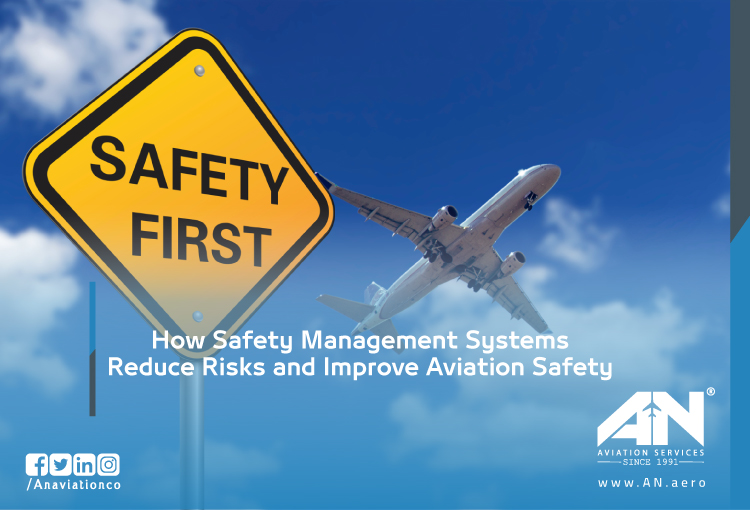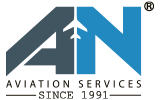
Flying is one of the safest ways to travel, but that’s not by luck it’s because of strict safety measures in place. Aviation organizations don’t just react to problems they work to prevent them. That’s where Safety Management Systems (SMS) come in.
An SMS is more than just a rulebook it’s a structured way to spot hazards, manage risks, and make flying safer for everyone. From ground handling to in-flight operations, a well-implemented SMS helps airlines, airports, and aviation crews reduce accidents, protect passengers, and comply with safety regulations.
But how exactly does it work? Let’s break it down and see why every aviation company needs a strong SMS.
Why Safety Management Systems Matter in Aviation?
Aviation is all about precision and high stakes. Mistakes can have serious consequences, so airlines, airports, and ground crews need a structured way to manage risks. That’s where an SMS comes in it’s a proactive approach to spotting dangers before they turn into problems.
A strong SMS doesn’t just check boxes for regulations; it saves lives, protects assets, and builds trust with passengers and employees. It’s not just about preventing accidents it’s about creating a culture where safety is everyone’s responsibility.
The Key Parts of a Safety Management System
An SMS isn’t a single rule or policy. It’s a whole system made up of different parts that work together to keep aviation operations safe. Let’s go through the big ones:
1. Safety Policy and Objectives:
A safety system starts with clear goals and a commitment from leadership. If management isn’t serious about safety, no one else will be either.
- Leaders set the tone: If safety is a priority at the top, it becomes part of the company culture.
- Written safety policies: Every organization needs documents outlining how safety should be managed.
- Defining responsibilities: Everyone, from pilots to baggage handlers, needs to know their role in keeping operations safe.
2. Leadership Commitment and Accountability:
Talk is cheap real commitment means leaders take responsibility for safety. That means:
- Investing in training and tools that improve safety.
- Encouraging employees to report safety risks without fear.
- Holding themselves accountable, not just frontline staff.
3. Clear Communication of Safety Goals:
If safety rules are unclear or buried in complicated manuals, they won’t be followed. Simple, clear, and consistent communication helps everyone stay on the same page. Ways to communicate safety goals:
- Regular safety meetings.
- Digital dashboards displaying safety performance.
- Reminders in break rooms and control centers.
4. Safety Managers and Their Duties:
A dedicated Safety Manager keeps the SMS running. Their job?
- Identifying risks before they cause problems.
- Making sure employees follow safety procedures.
- Reviewing safety reports and updating protocols.
Without someone in charge, safety efforts can fall apart fast.
5. Employee Training and Awareness Programs:
Knowledge is power. If employees don’t know what risks look like or how to handle them, they can’t prevent problems. Training should be:
- Ongoing (not just a one-time session).
- Realistic (using actual case studies).
- Engaging (not just dry PowerPoints).
Safety Risk Management: Spotting and Controlling Hazards
An SMS is about actively managing risks. That means:
Common Hazards in Aviation:
- Ground handling risks: Fuel spills, equipment malfunctions, vehicle collisions.
- Flight operation risks: Bad weather, bird strikes, pilot fatigue.
How to Identify Hazards:
- Employee reports: Encouraging staff to report unsafe situations.
- Inspections: Checking aircraft, runways, and equipment regularly.
- Data analysis: Looking at past incidents to find trends.
Assessing and Controlling Risks:
Once a hazard is spotted, the next step is evaluating its severity and finding ways to control it.
- Eliminate the risk if possible (e.g., fixing faulty equipment).
- Reduce the risk by adding controls (e.g., improved training).
- Monitor the risk if it can’t be removed completely (e.g., tracking weather conditions).
Safety Assurance: Checking If the System Works
A safety system is only useful if it actually works. That’s where safety assurance comes in.
1- Tracking Safety with KPIs:
Aviation organizations use Key Performance Indicators (KPIs) to measure safety performance. These might include:
- Number of reported safety incidents.
- Percentage of safety training completed.
- Response time to safety issues.
Regular Audits and Inspections:
Even the best safety plan needs regular checkups. Audits help find weak spots before they cause real problems.
Learning from Past Incidents:
Mistakes happen. The key is learning from them so they don’t happen again.
- Investigate incidents and near-misses.
- Update safety protocols based on real data.
- Encourage employees to report issues without punishment.
Safety Promotion: Building a Safety-First Mindset
For an SMS to work, everyone needs to buy in from top management to frontline workers.
How to Promote a Safety Culture
- Training and education: Make safety training a regular habit, not a one-time event.
- Encourage reporting: Employees should feel safe speaking up about risks.
- Recognize good safety behavior: Reward staff who follow safety procedures.
The Benefits of a Strong SMS
So, why put so much effort into safety management? Because it pays off in big ways:
Fewer accidents: A safer workplace means fewer injuries and damages.
Better reputation: Passengers trust airlines with strong safety records.
Regulatory compliance: Meeting ICAO and local aviation authority rules avoids fines and disruptions.
Improved efficiency: Fewer safety problems mean smoother operations and lower costs.
Challenges in Implementing an SMS
Of course, setting up a strong safety system isn’t always easy. Common challenges include:
- Cost: Training, equipment, and audits require money.
- Employee resistance: Some workers might push back against new rules.
- Data management: Tracking and analyzing safety reports can be tricky.
Best Practices for a Successful SMS
If you want an SMS that actually works, here’s what aviation companies should focus on:
- Top management must lead by example
- Set clear and realistic safety goals
- Encourage employees to report risks and reward participation
- Use technology for risk assessment and reporting
- Regularly update safety procedures based on real data
How AN Aviation Leads in Safety Management?
At AN Aviation, safety isn’t just a priority it’s part of everything we do. We:
- Follow strict ICAO and local aviation authority regulations
- Invest in employee training and cutting-edge safety tools
- Use data analytics to improve safety performance continually
- Encourage a strong safety culture among staff and partners
When you work with AN Aviation, you’re choosing a company that puts safety first always.

